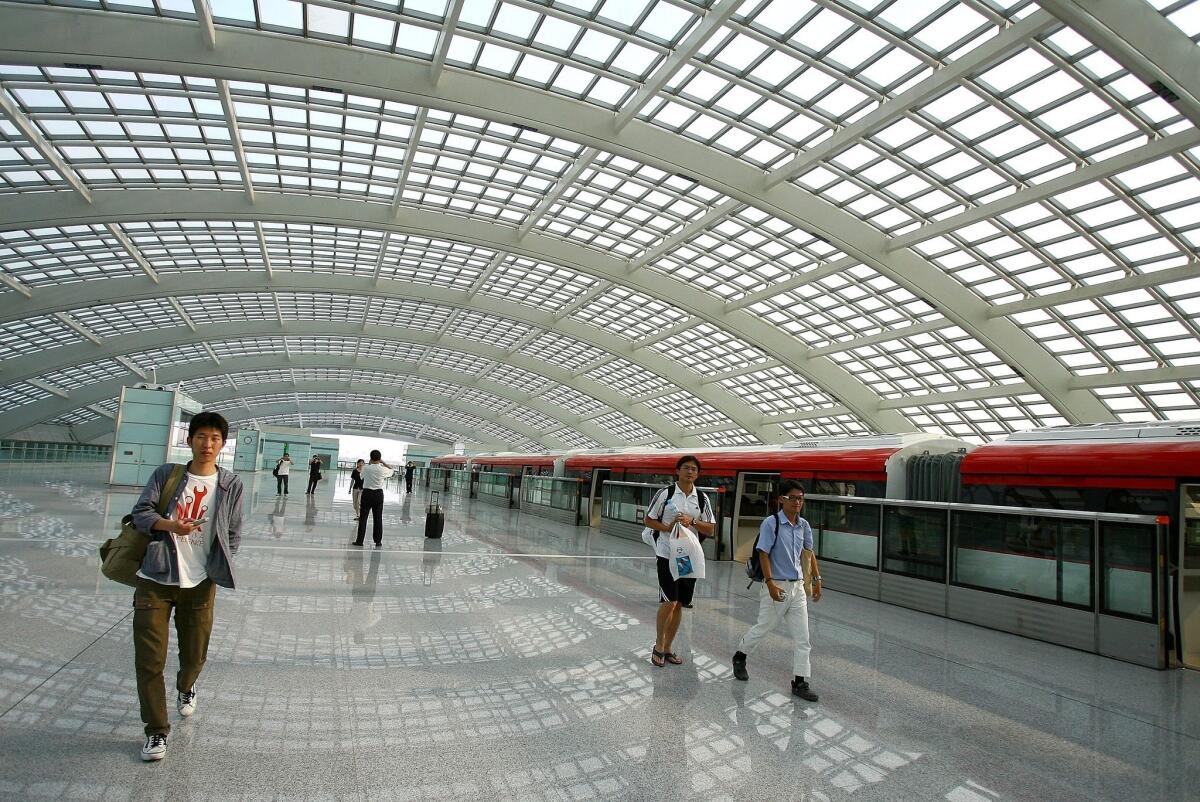Scams blocking Chinese investors’ path to U.S. green cards

Jianwei Li and two other wealthy Chinese businessmen thought they had a sure thing when they wired $1 million each to a California firm that had promised to build a fine Chinese restaurant in the Bay Area city of San Bruno.
The project had an alluring budget with multiple lucky 8s — $5,888,888 — and the three investors were assured it would create enough jobs to obtain the real prize: a U.S. green card.
Months passed and nothing happened. When Li’s friends cornered the project developer one evening at a karaoke bar, the man, identified in court papers as Sammy Lee, apparently devised a fantastic escape.
“He went to the bathroom, fell to the ground and said he was having a heart attack,” said Edward Lau, a San Francisco lawyer who won a default judgment this year against Lee and his associates. “The ambulance came and took him to the hospital. But [the hospital] said he was never admitted. He kind of woke up and left the scene.”
Li and his co-investors had fallen victim to a fast-growing scam — fraud in the government program that gives wealthy people a pathway to U.S. citizenship as long as they are willing to pay. For a minimum $500,000 investment, a foreign investor can get a conditional green card. The card can become permanent if the project creates 10 jobs within two years.
Little-known or used for many years, the number of these EB-5 visas, as they are known, has taken off recently, nearly doubling each year since 2009, in large part because of demand from wealthy Chinese. The program is likely to approach its annual cap of about 10,000 this year.
Along with that rapid growth have come delays, weak oversight and increasing amounts of fraud that often have left millions of investors’ dollars sitting in bank accounts as well as lives and businesses in limbo.
The North American Securities Administrators Assn., an advocacy group, now ranks EB-5-related scams as one of the top new threats to investors.
Overall, EB-5 visas are a small part of the 140,000 immigrant visas allotted annually on the basis of employment. But given the nation’s budget crunch and continued high unemployment, lawmakers have called for expanding the EB-5 program.
Other advanced countries aggressively use immigration policies to further their economic goals.
Canada, Australia and Britain have investor-visa programs similar to the EB-5. Portugal and Ireland, hard hit by the Eurozone debt crisis, offer residency papers for big property purchases. And Spain, suffering from a glut of unsold homes, is considering giving visas for house purchases of as little as $210,000.
“The underbelly is that once people started to see growth in this program, we started to see a lot more fraud,” said Muzaffar Chishti, a director at the Migration Policy Institute, a nonpartisan think tank based in Washington.
Chishti is wary about a ramp-up of EB-5 visas.
“Any program that has a growth rate like that should be scrutinized … especially when we have seen some pitfalls,” he said.
Behind the EB-5 boom is one huge source: China. For various reasons, such as better education for their children, 60% of the nation’s millionaires are thought to be considering emigration, according to the Hurun Report, a Shanghai publication focused on Chinese wealth.
About 80% of the 7,641 EB-5 visas issued in the last fiscal year went to Chinese investors and their immediate families, according to the U.S. Citizenship and Immigration Services agency, which oversees the program. Officials said China’s soaring demand could soon trigger a quota for any one country.
In the U.S., the EB-5 program has become a popular alternative to bank financing and bond sales by pooling investments from multiple individuals through so-called EB-5 regional centers.
The EB-5 program has “tremendous potential” to create employment, said Patrick J. Leahy, (D-Vt.), the chairman of the Senate Judiciary Committee, which has oversight of immigration.
In Southern California, EB-5 investors were behind the Marriott Hotel at L.A. Live and contributed $96 million toward projects in San Bernardino, creating about 4,000 jobs, city officials said.
But there is little regulation of how promoters market visas to would-be immigrants. A number of projects have been shut down for failing to meet the government’s standards for job creation. In many cases, developers have allegedly misrepresented their projects to investors or have misspent the funds collected.
One of the largest and most recent cases involves a proposed convention center and hotel project near Chicago’s O’Hare International Airport and a 29-year-old named Anshoo Sethi. The former pharmacy technician raised more than $145 million for the project from 250 investors, most of them Chinese, according to federal court papers.
In a civil enforcement action filed in February, the Securities and Exchange Commission froze the assets of Sethi’s companies and accused him of duping investors with marketing materials falsely claiming that Hyatt, Starwood Hotels and Intercontinental Hotel Group were participating in the project.
The SEC said investors had paid Sethi nearly $11 million in administrative fees on top of their investments, and that nearly all that money had been spent.
Sethi’s attorney, Arthur Don, declined to comment, saying the litigation remained in an early stage.
Officials from the U.S. Citizenship and Immigration Services agency, which had greenlighted Sethi’s EB-5 regional center, would not discuss the case because it is pending. More generally, they said their oversight focuses on ensuring that EB-5 projects truly create jobs.
It is not the agency’s role to evaluate the effectiveness of a regional center or make any assurances about the quality of the investment opportunities they offer, spokesman Christopher Bentley said.
The agency has begun to beef up its monitoring, collecting information on how EB-5 funds are used and requiring regional centers to file annual reports detailing their investments.
Even though it has bulked up staff to 55 from just seven in 2007, the large volume of visa applications and troubled cases have created significant delays for entrepreneurs and investors alike.
“Clients are screaming,” said Jason Lee, a Pasadena immigration lawyer. “They have their own schedules. They need to be here sooner.”
Michael Mattox, operator of an EB-5 regional center in Washington state, said his 95 mostly Chinese clients are still waiting for visas more than 20 months after they invested nearly $50 million in bonds for a floating bridge project in the Seattle area.
Some of them are demanding their money back, said Mattox, who received more than $42,000 in fees from each investor. “Every night this is difficult on me,” he said.
Regulators in China, for their part, have responded to the EB-5 problems by tightening restrictions on marketers and banning them from using television, radio and the Internet to promote the program.
For many, however, those precautions came too late.
The San Bruno restaurant developer who apparently faked his heart attack can’t be found anywhere, said Lau, the attorney. The lawyer is doing what he can for his clients, going after any assets owned by the developer and his associates, but nothing has been recovered yet.
Meanwhile, two of Lau’s clients remain stuck in China, out more than $1 million each and with nothing to show for it. Lau said he previously helped eight Chinese get EB -5 visas after they proved that the projects created or preserved at least 10 jobs. His latest clients never got that far.
“They didn’t even have groundbreaking,” he said.
More to Read
Inside the business of entertainment
The Wide Shot brings you news, analysis and insights on everything from streaming wars to production — and what it all means for the future.
You may occasionally receive promotional content from the Los Angeles Times.












